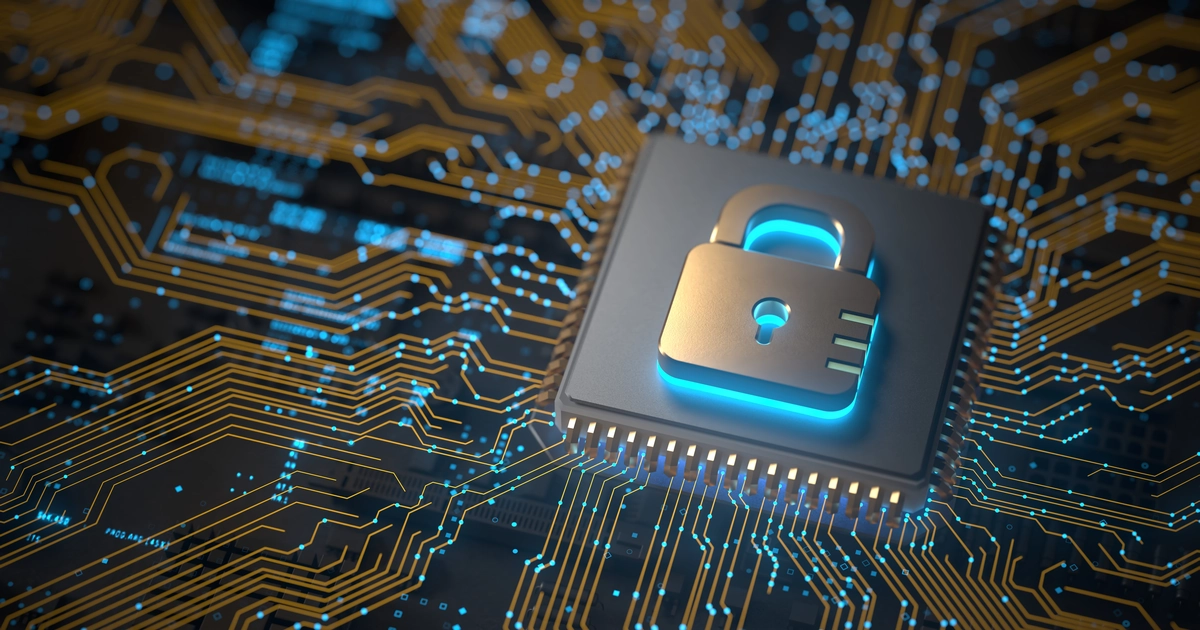Cybersecurity has never been more important. We face new threats every day, and our response requires the latest technologies and robust defenses. This article explores in detail the new cybersecurity technologies and challenges that will be in the spotlight in 2025.
Cybersecurity Trends to Watch in 2025

Emerging Technologies and the Future of Security
2025, the year in which advances in artificial intelligence (AI) and quantum computing will have a major impact on the field of cybersecuritywill be the first of its kind. These technologies will dramatically change both defenses and attacks, revolutionizing traditional cybersecurity concepts.
AI has the ability to instantly process vast amounts of data and discover complex threats that traditional security measures have failed to address. At the same time, quantum computing is powerful enough to neutralize traditional encryption techniques, potentially changing the very foundation of cybersecurity itself.
However, these new technologies are a double-edged sword.While security advances favor defenders, attackers may also develop advanced attack methods using AI and quantum technologyThere is a It will be important to determine how the balance between offense and defense will change in the future.
Innovations and Risks of Artificial Intelligence and Machine Learning
Artificial Intelligence (AI) and Machine Learning (ML) are dramatically revolutionizing cybersecurity and having a significant impact on attack detection and defense. These technologies are helping to build preventative defenses as well as discover threats in real time that traditional security measures have missed.
Advanced Threat Detection with AI
AI instantly analyzes vast amounts of data to find anomalous patterns that could not be detected by conventional rule-based systems. For example,Immediate detection of anomalies that deviate from typical behavior patterns by analyzing network traffic and user behavior logsand detect signs of cyber attacks in real time. This enables rapid countermeasures to be taken once an attacker has infiltrated a system, before they can cause extensive damage.
- Automated Threat IntelligenceAI: AI monitors a huge volume of security events in real time that would be difficult to process manually, and automatically flags suspicious activity. This allows security professionals to respond immediately to critical issues.
- case study: By 2024, AI-operated systems will be more effective than traditional methods of phishing attacks.35% high accuracy detectionThe report shows that the company's employees were able to receive a phishing email from the company's website. This greatly reduced the risk of harm to employees and the compromise of corporate data [Reference: Zscaler's ThreatLabz 2024 Phishing Report. https://www.zscaler.jp/blogs/security-research/phishing-attacks-rise-58-year-ai-threatlabz-2024-phishing-report].
Preventive security with ML
Machine learning learns from historical cyber attack data,Predicting new attack methods and evolving defensesThe system will be able to Unlike traditional static rule-based systems, ML self-learns new patterns and methods of cyber attacks and strengthens the system's defenses.
- Example: Countering the Evolution of Phishing AttacksML: By utilizing ML, even if an attacker introduces a new method, we can detect the signs of such an attack in advance based on similar attacks in the past and block the attack. In particular, the detection rate of phishing attacks and malware has been greatly improved.
- Ransomware CountermeasuresML: ML can minimize damage by learning ransomware behavior patterns in advance and stopping systems in the early stages of infection. It effectively addresses new variants of ransomware that traditional signature-based detection methods cannot follow.
However, these technologies are beginning to be utilized by attackers,New AI-based attack methods are emerging one after another.The attackers are doing so. For example, attackers use AI,Optimize social engineering attacksThe system is able to conduct highly successful attacks by analyzing the target's behavior and psychology in detail.
- Evolution of Social Engineering: AI has the ability to analyze human behavior and emotions, and sophisticated fraudulent e-mails and phishing scams are being generated that take advantage of the target's emotions. This increases the risk of personal information being stolen in ways that would previously go unnoticed.

The Potential and Threats of Quantum Computing
Conventional security systems, such as RSA and ECCpublic key cryptosystemHowever, with the advent of quantum computers, it will be possible to break these ciphers in a short time. For example, with current cryptographyseveral million yearsThe factorization that is said to be required by a quantum computer isPossibility of unraveling in a few secondsThere is a
- The Threat of Quantum Computers: "Post-quantum cryptography" is being developed to replace current cryptosystems before quantum computers are available to the public; by 2025, governments and businesses are expected to accelerate their adoption of this new cryptography technology.
- concrete example: Currently, major companies such as Google and IBM are investing in the development of new security technologies based on quantum computing, some of which may be commercialized within the next five years [Reference: Google Quantum AI https://quantumai.google/].
Diffusion of Quantum Cryptography
To counter the threat of quantum computing,quantum cryptographyis being developed. It uses the principles of quantum mechanics to achieve cryptographic communications that are virtually impossible to decipher. Quantum cryptography is being increasingly adopted, especially by financial institutions and government agencies, and more companies are expected to adopt this technology by 2025.
- Quantum Key Distribution (QKD): QKD, a quantum cryptography technology, provides greater security than conventional means of communication because it can immediately detect the effects of an unauthorized interception of a communication channel. This technology is already being demonstrated and is expected to be increasingly deployed on a commercial basis by 2025.
Quantum computing is an innovative technology, but the risks associated with its advancement must also be addressed, and there is an urgent need to promote post-quantum cryptography and quantum cryptography technology.

Automation and attacker sophistication through AI and machine learning
While AI (Artificial Intelligence) and ML (Machine Learning) are dramatically enhancing defenses in the cybersecurity arena, they are also giving attackers an equally significant arsenal. This technological evolution has the potential to facilitate the "automation" of cybersecurity, helping to detect threats in real time and prevent attacks before they happen, while providing new tactics for attackers.
Until now, security measures have relied primarily on rule-based systems set up by humans. However, AI and ML can process vast amounts of data and detectInstant detection of advanced patterns and anomaliesThe ability to do so has dramatically improved the response to cyber attacks.
Cyber Defense Using AI and ML
By utilizing AI and ML, security measures are becoming more automated and efficient. For example, by processing huge data sets in real time, it is now possible to detect anomalies at a level not possible with manual monitoring. This has created a system that prevents cyber-attacks before they occur.
Effective Defense Against Phishing Attacks and AI/ML
Phishing attacks are the most common type of cyber attack and a means for attackers to fraudulently obtain users' personal information. Phishing scams continue to evolve and are becoming increasingly difficult to detect with traditional systems. However, the use of AI and ML has dramatically improved the detection accuracy of these attacks.
- Detect phishing attacks using MLML: ML learns attack patterns from past phishing attack data and can identify similar patterns when new attacks are launched. This allows us to issue warnings and take countermeasures before an attack occurs. Specifically,Technology that automatically filters malicious messages by analyzing the text of the email and the sender's behavior patterns.is already in practical use.
- Example: In 2024, a certain phishing detection system using ML will be more effective than traditional rule-based systems.40% Detects phishing attacks with high accuracyThe results of the study reported that the
The Role of AI in Ransomware Protection
Ransomware is a method of infiltrating a computer system, encrypting data, and demanding a ransom. In recent years, ransomware attacks have become more sophisticated and more damaging on a larger scale.Preventive detectionIt plays a major role in
- Early detection of ransomware using AI: AI monitors network traffic and file behavior patterns in real time and immediately detects abnormal behavior. For example, normal operations do not occurDetects abnormal encryption processes and automatically locks the systemThis can help stop ransomware attacks before they spread.
- Learning Ransomware Patterns with MLML: ML analyzes the behavior of past ransomware attacks,Proactively detect signs of new ransomwareWe will build a model to This will enable us to prevent unknown ransomware attacks that traditional security solutions cannot find.
Automate and streamline security measures
AI and ML automate many security measures that were previously done manually, eliminating human error and time constraints.
- Automatic analysis of log data: Traditionally, huge amounts of log data are analyzed manually by security experts, but AI does this instantaneously. This makes it possible to identify suspicious activity from millions of log data and detect signs of attacks in advance.
- Network traffic monitoringML: ML learns network traffic patterns and automatically flags traffic that deviates from normal behavior. This provides early warning when there are signs of an attack and allows for quicker response.

Sophisticated tactics used by attackers to exploit AI
AI and ML are very powerful tools in defense, but attackers are also beginning to exploit these technologies. Cyber attacks using AI and ML are more sophisticated and harder to detect than traditional attacks.
AI-based social engineering attacks
Social engineering is an attack technique that exploits human psychology and behavior to illegally obtain information. In the past, social engineering has mainly been done manually by attackers to target specific individuals or companies and win their trust,Using AI, attackers can automate highly accurate attacks against large numbers of targetsIt is possible to do so.
- Personal behavior analysis by AI: AI analyzes a target's behavioral patterns and online activity to launch attacks at the most effective time. For example,AI crawls SNS and email data to automatically optimize message content and timing for sending messages that are most likely to be responded to by the target audienceIt is possible to do so.
- Increased sophistication of phishing e-mails: While traditional phishing emails are clearly recognizable as spoofed, AI mimics the human writing style to generate more natural and authentic messages. As a result, there is an increased likelihood that targets will provide information without being aware of the phishing attack.
AI-based attack tools
Attackers are using AI and ML to execute sophisticated attacks that were not possible with traditional attack methods.
- Automatic Vulnerability Discovery: Attackers can use ML to automatically detect vulnerabilities in companies and systems by having ML models analyze large amounts of software and system code to find unknown vulnerabilities,Dramatically increase the success rate of zero-day attacksThis will make it possible to
- Real-time optimization of attacks by AI: AI learns security countermeasures while the attack is in progress and optimizes the attack in real time. This allows attackers to immediately change their attack methods in response to the countermeasures taken by the defending system.

Evolution and Challenges of Cloud Security
With the proliferation of cloud computing, security challenges are becoming more complex every day. Companies are actively adopting cloud services to improve operational efficiency and reduce costs, but cloud environments face a variety of security risks that differ from those of traditional on-premise environments. In particular,Distributed data managementand ... andMulti-tenant environmentThe separation of data and complexity of management in the cloud is a major challenge for cloud security.
Cloud-native security and widespread adoption of zero-trust approach
As cloud computing evolves, there are an increasing number of challenges that cannot be addressed by traditional security models.By 2025, the "zero-trust security model" will be mainstreamand is expected to standardize an approach that strictly limits all access, both inside and outside the network.
What is Zero Trust Security?
Zero Trust Security Modelis distinct from the traditional perimeter-based security model. Traditionally, perimeter-based security assumes that users and devices within a network are trusted, and defenses are hardened against external threats. However, in a cloud environment, the boundaries are blurred and all users and devices inside and outside the network areIncludes potential risksIt must be regarded as a
The basic philosophy of the Zero Trust Model is the concept of "Never trust, always confirm. Specifically, it has the following characteristics
- Authentication and authorization of all access at all times: Whether the user is in or out of the network, all access is verified to ensure that access rights are appropriate. This greatly reduces the risk of malicious insiders or intruders attacking the system from the inside.
- context-based authenticationFlexible access control is provided based on the user's role and current situation (IP address, device status, access time, etc.). For example, users who try to access the system at times when they do not normally do so will be required to use two-factor authentication (MFA).
- Least PrivilegeThe system is designed to minimize the scope of damage in the event of unauthorized access by granting only the minimum necessary privileges to users and devices.
Background of Zero Trust's Popularization
The following factors are the reasons why many companies will adopt the zero-trust model by 2025
- Expanding Cloud Environments and Remote Work: Due in part to the Corona Disaster, remote and hybrid work has become mainstream, and the number of employees accessing the company network from outside the company has skyrocketed. As a result, traditional perimeter security is no longer sufficient, and a zero-trust approach is needed.
- Increase in sophisticated cyber attacksThe number of attack methods, such as internal threats, phishing, and ransomware, are becoming increasingly sophisticated, and conventional security systems are increasingly unable to respond to them. The Zero Trust model provides enhanced protection against all types of attacks, both internal and external.

Enhanced Security in Cloud Environments
Security is becoming more complex as cloud environments expand. In particular, data is increasingly stored across multiple cloud servers and geographies, making data management and protection more difficult. In addition, companies use multiple cloud providers, "multicloud (advertising)Adopting a "one-size-fits-all" strategy requires security measures to be taken across different environments.
Security challenges in multi-tenant environments
Cloud service providers host multiple customers (tenants) on a single physical server, "theMulti-tenant environmentThe "M" is used in the following manner. This allows for efficient use of resources, though,Data separation between tenantsis very important.
- Importance of data segregationThe risk is that if security measures are inadequate, unauthorized access from other tenants could result in the leakage of sensitive data. Cloud providers should implement strict access controls and encryption to ensure that data is not mixed with that of other customers.
- ComplianceData storage across different countries and regions requires compliance with national data protection regulations (e.g., GDPR and CCPA), which also complicates security management. Companies should always ensure that the cloud services they use are compliant with local legal requirements.
What is cloud-native security?
Cloud-native security is a security measure specifically designed for cloud environments,Container Technologyand ... andserverless architectureand other cloud-specific infrastructure advancements.
- Security Challenges of Container TechnologyContainers: Containers are a technology that allows applications to run in a small, independent environment, making very efficient use of resources in the cloud. However, improper management of communication and resources between containers creates security risks that can affect other containers. In Cloud Native Security,Container Separationand ... andEncryption of communication between containersis an important factor.
- serverless architectureServerless: Serverless is a technology that delegates back-end management of applications to cloud providers. This makes it easier to scale and manage applications, though,Lack of transparency in terms of securitycan be a challenge. In particular, because of the provider's dependence on how the back-end infrastructure is managed, it is important for cloud-native security to work with the provider to establish a security posture.
Directions for Strengthening Cloud Security
- End-to-end encryption: Data in the cloud must be encrypted at all times. In particular, end-to-end encryption must be provided when data is moved or stored in the cloud to prevent unauthorized access by third parties.
- Dynamic threat detection system: To address dynamic threats in cloud environments, real-time threat detection systems using AI and machine learning are being deployed. This allows for immediate detection and prevention of anomalous traffic and unauthorized access.
As cloud security evolves, zero-trust security and cloud-native security are key. Companies need to ensure data protection and access control in increasingly complex cloud environments and be prepared to respond to new cyber attacks.

Summary: Cybersecurity Strategies for 2025
By 2025, there is no doubt that technological innovation and threat sophistication will continue to increase in the field of cybersecurity. Companies will need to build a robust security posture to deal with new threats while taking advantage of advances in AI, ML, and quantum computing.
- Proactive introduction of the latest technologyThe key is to be ready to counter attackers by utilizing the latest security technologies, such as AI and Zero Trust.
- Security Education and PartnershipsThe following are some of the key elements: employee training and collaboration with specialists are also essential.
The future of cybersecurity will be shaped by technological innovation and the battle of defenses. Companies need to stay abreast of the latest technologies and take constantly evolving security measures.










